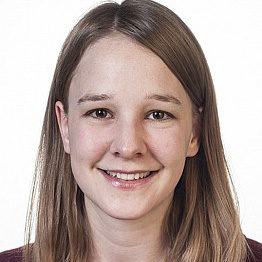Developing novel selection markers for plant transformation to advance live-imaging techniques
The aims of this project were to develop visual selection markers for the hairy root transformation system in Medicago truncatula that do not interfere with confocal live imaging of fluorescently labelled proteins.
The Idea
We aim to develop a novel visual selection marker for plant transformation that 1) is not based on resistance to antibiotics and herbicides, 2) allows for fast screening of transformed plant tissue, and 3) does not interfere with live cell fluorescence microscopy.
In the Oldroyd lab we study root endosymbioses using the model plant Medicago truncatula. Medicago and other plant species can be transformed transiently by hairy root transformation, a fast transformation technique that can be used to introduce and test a large number of constructs within a few weeks. Because these hairy roots are usually used to assess symbiotic interactions with bacteria and mycorrhiza, the selection markers should not interfere with root development or symbiotic interactions, ruling out markers based on resistance to antibiotics and herbicides. Currently, a dsRed marker under the 35S promoter is used as a visual selection marker, but because it is strongly expressed in all tissues, confocal live imaging of fluorescent markers under endogenous promoters is not feasible.
To solve this problem, we aim to develop tissue-specific visual markers that do not interfere with the region of our interest in the root (the differentiation zone and the proximal elongation zone). In addition, we would like to develop organelle-specific markers that are only present in a very restricted subcellular region of the cells, such as the nuclear envelope. We will test this approach using fluorescent proteins (dsRed and 3XVENUS) as well as chromo proteins, which are visible to the naked eye and therefore allow for a faster screening of transformed tissue without the need of a fluorescence microscope.
The fast hairy root transformation system in combination with the modular Golden Gate cloning approach will allow us to test and compare a large number of different visual markers in a short amount of time. In order to assess whether fluorescent and chromo protein markers can also be useful for other plant transformation systems, we will test the constructs in Marchantia polymorpha under appropriate promoters.
The Team
Dr Katharina Schiessl,
Postdoctoral Researcher, John Innes Centre, Norwich
Dr Fernan Federici,
Research Group Leader, Pontificia Universidad Católica de Chile, Chile
Ms Leonie Luginbuehl,
Graduate Student, John Innes Centre, Norwich
Mr Guru Rhadakrishnan,
Graduate Student, John Innes Centre, Norwich
Project Outputs
Project Report
Summary of the project's achievements and future plans
Project Proposal
Original proposal and application
Project Outcomes
List of modules created and microscopy images of marker expression in roots.
Developing novel selection markers for plant transformation to advance live-imaging techniques
Project summary
In this project, we aimed to develop visual selection markers for the hairy root transformation system in Medicago truncatula that do not interfere with confocal live imaging of fluorescently labelled proteins. For this, we aimed to restrict the selection markers to a specific tissue, the lateral root cap, and to a specific cell organelle, the nuclear envelope. We also tested chromophores as an alternative to the currently existing fluorescent transformation markers.
In order to do this, we synthesised 27 DNA parts including tissue specific promoters and coding sequences of fluorophores and chromophores. We generated 25 level 1 and level 2 GOLDEN GATE plasmids and transformed these into Medicago hairy roots. Subsequently, we tested whether the selection markers were detectable under the stereomicroscope and further took images using confocal microscopy. We found that the nuclear-envelope localised fluorophore tdtomato expressed under the Lotus UBIQUITIN promoter was detectable under the stereomicroscope and could therefore be used as a novel selection marker for live imaging. Furthermore, we found that the BEARSKIN promoter was not detectable in the lateral root cap of hairy roots but expressed at the base of the induced hairy root callus. No significant colour change was observed in the roots transformed with the chromoproteins.
Report and Outcomes
For this project, we designed and synthesised 27 level 0 GOLDEN GATE DNA parts including tissue specific and cell organelle specific promoters, coding sequences, and terminators (6 sequences), coding sequences of fluorophores (12 sequences) and chromophores (9 sequences; table 1 – list of modules). Coding sequences of fluorophores and chromophores were codon optimised for Medicago sativa using the coding sequence optimisation tool available under https://www.idtdna.com. We used GOLDEN GATE cloning to generate 15 selection marker constructs as level 1 modules. In the next step, we performed GOLDEN GATE level 2 reactions to combine these selection marker modules with level 1 modules of fluorescently labelled endogenous reporter genes (pL1M_R2-pSHR:SHR-GFP or pL1M_R2-pSHR:dsred) into a binary vector. The 12 constructs were transformed into Medicago roots using the transient hairy root transformation system. Subsequently, we tested whether the fluorescent selection markers were detectable under the stereomicroscope and could therefore serve as visual selection marker for hairy roots. All DNA parts and constructs are listed in table 1.
We found that the nuclear-envelope localised fluorophore tdtomato expressed under the Lotus UBIQUITIN promoter was detectable in transformed roots under the stereomicroscope (image_EC20635-slide 1). In detail imaging of the identified roots using confocal microscopy confirmed expression of tdtomato in the nuclear envelope (image_EC20635-slide 2). We therefore concluded that the pLjUBI:NUP-tdtomato construct can be used as a visual selection marker for hairy root transformation. Although we were previously able to detect pSHR:SHR-GFP in the root tip, we were not able to image both the selection marker and the reporter gene within the same root during this project. Plants expressing pLjUBI:NUP-tdtomato in roots were transferred to terragreen and sand and inoculated with rhizobia meliloti. These plants generated nodules after 3 weeks, confirming that the construct did not interfere with the symbiotic interaction and nodulation.
In contrast, we did not observe any fluorescent signal using the pLjUBI:NUP-mkate constructs (both N-terminal and C-terminal version, EC20636 and EC20634) under the stereomicroscope, suggesting that the signal of the mkate fluorophore may not be strong enough for our purpose. Furthermore, screening of pLjUBI:NUP85-mturquoise2 (EC20263) under the stereomicroscope and under the confocal microscope was difficult because of high background fluorescence.
We found that fluorophores expressed under the MtBEARSKIN promoter were expressed at the base of the induced hairy root callus but not in the lateral root cap (EC20638) (image_EC20638-slide 3). Therefore, we can conclude that this selection marker does not serve our purpose of identifying transformed roots very well. No signal was detected for constructs where the fluorophores were expressed under the AtBEARSKIN promoter (EC20260, EC20261, EC20262).
Roots transformed with constructs containing the chromophores amilCP and cjblue under the constitutive LjUBIQUITIN promoter (EC20639 and EC20259; image_EC20639-slide 4; image_EC20359-slide 5) showed weak green – yellowish coloration. However, we concluded that the colour change was not convincing enough to serve for selection. In addition, several attempts to clone the level 1 module EC21070 into the binary vector failed. Therefore, we were not able to test the pLjUBI-aeblue construct in hairy roots.
In summary, we found that the nuclear-envelope-localised fluorophore dtomato expressed under the Lotus UBIQUITIN promoter was detectable under the stereomicroscope and could therefore provide a novel selection marker for live imaging in the Medicago hairy root transformation system.
Follow on Plans
So far, we have generated a nuclear-envelope localised selection marker using the NUP85 gene for organelle-specific localisation. In a next step, we would like to test the WPP domain of the RAN GTPase activating protein 1 (At3g63130; amino acids 1–111, inclusive), which has been shown to localise proteins to the nuclear envelope in plants, as described by Deal and Henikoff, 2010, for the INTACT method. The WPP domain can be used as an N-terminal tag of any fluorophore coding sequence. This would allow us to be more flexible with tagging fluorophores without the NUP85 coding sequence. We would use the funding to synthesise the fluorophores tdtomato and neongreen as N-terminal tagging open reading frames (C-level 0 modules) and the WPP domain as S-level 0 module. We would clone the fluorophores with an N-terminal WPP domain expressed under the LjUBI promoter and transform them into Medicago hairy roots. Developing visual selection markers that do not interfere with endogenous fluorescently labelled reporter genes was the first step towards advancing live imaging in the Medicago root. During this project, using scanning confocal microscopy to do live imaging in the Medicago root has proven very challenging because of its thickness compared to the Arabidopsis root. Therefore, we would like to investigate whether light sheet microscopy would be one approach to overcome these limitations. To further explore the opportunities to advance live imaging it would be a good opportunity to visit a light sheet microscopy facility with experience in plant root imaging, for example in the Maizel lab in Heidelberg.







